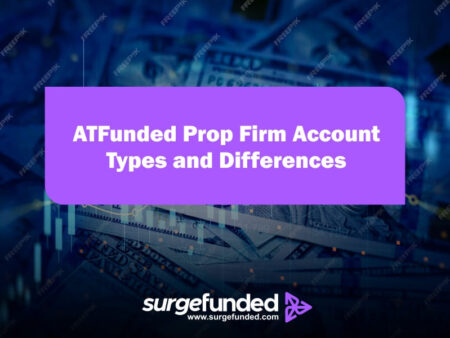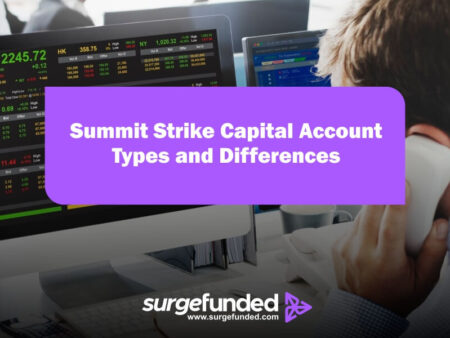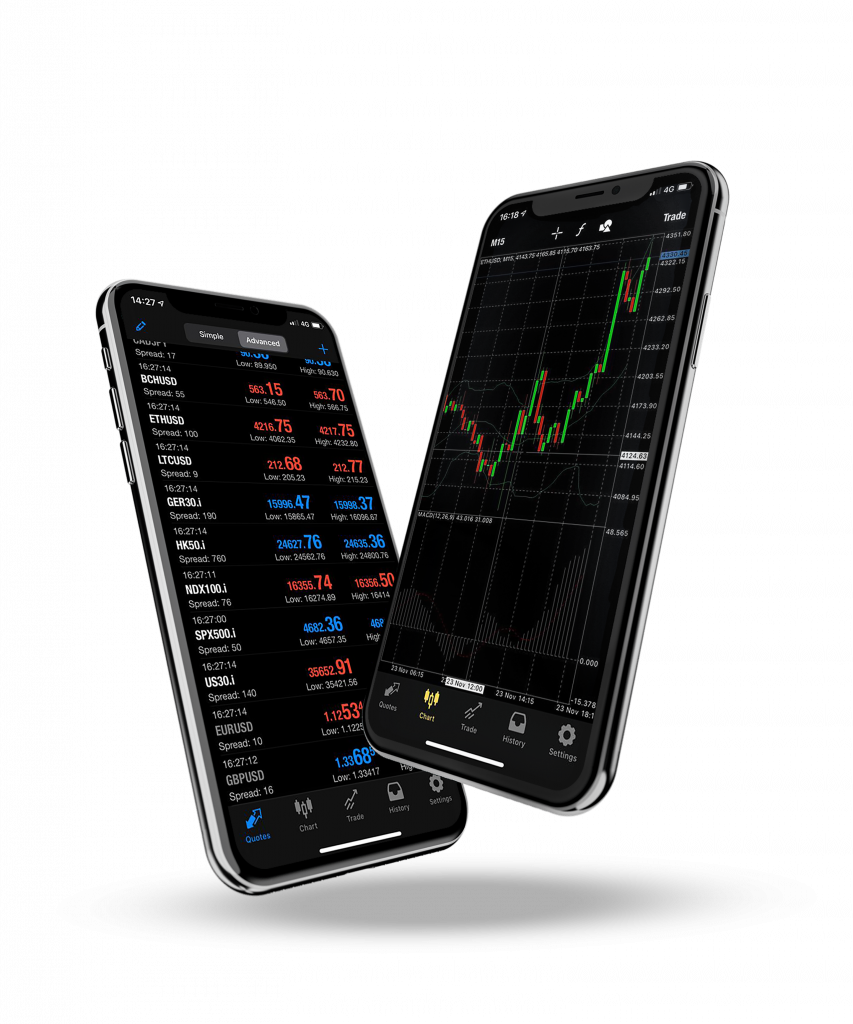AuraFunded account types and differences are made to satisfy the various demands of traders in the fast-paced market of today. By providing funded accounts to qualified individuals, firms such as AuraFunded have transformed the way traders can obtain cash and generate profits in the realm of proprietary trading. Aspiring traders have the chance to handle substantial sums of capital through the prop trading firm AuraFunded in exchange for a cut of their earnings. Anyone considering joining this trading model should be aware of AuraFunded account types and differences, as well as their structure and other aspects.
This post will discuss AuraFunded account types and differences, their main distinctions, their benefits and drawbacks, and how to assist you choose the one that would be most appropriate for your trading objectives and tactics.
What Is AuraFunded
Prop firms, such as AuraFunded, provide traders with access to funds to trade financial markets without requiring a substantial personal investment, in contrast to traditional brokers. Rather, traders are assessed on their overall performance, risk management abilities, and trading methods.
Numerous account types are available through AuraFunded, each with unique profit-sharing plans, risk management guidelines, and funding options. These AuraFunded account types and differences serve traders with different trading styles, capital needs, and experience levels. Whether you’re a beginner looking to take your first steps in trading or an experienced trader seeking to scale your operation, AuraFunded has an account to suit your needs.
AuraFunded Account Types: An Overview
There are several AuraFunded account types and differences designed to cater to a wide range of traders. These accounts differ in size, profit-sharing structures, risk management parameters, and scalability options. Below is a breakdown of AuraFunded account types and differences:
1. Standard Account
The standard account is AuraFunded’s entry-level account, which is intended for novice traders or individuals who are unfamiliar with prop trading. For traders who want to trade with significant funds but are still developing their skills, this account type is perfect.
Characteristics:
- Account Size: Typically ranges from $10,000 to $50,000.
- Profit Split: Traders typically receive 70-75% of the profits they generate.
- Evaluation Period: In order to evaluate traders’ trading abilities and risk management, this account type necessitates that they undergo a performance evaluation.
- Risk Management: This sort of account typically has a drawdown limit of 5–10% of the original capital.
- Leverage: Traders can effectively optimize their capital using Standard Accounts’ moderate leverage, which is often between 1:10 and 1:20.
- Trading Pairs: Forex, indices, and commodities are just a few of the financial markets that traders have access to.
Advantages:
- Low initial investment and accessible for new traders.
- A simple profit-sharing plan with a comparatively little assessment charge.
- Moderate guidelines for risk management.
Disadvantages:
- The profit split (70-75%) is slightly lower compared to more advanced account types.
- The drawdown limit may feel restrictive for more aggressive traders.
2. Pro Account
The Pro Account is geared towards traders who have more experience and a proven track record of profitability. It offers a higher level of capital and provides the opportunity to take on larger trades with more flexibility.
Characteristics:
- Account Size: Pro Accounts typically range from $50,000 to $200,000, depending on the trader’s performance and evaluation.
- Profit Split: Traders receive a higher percentage of profits (80-85%).
- Evaluation Period: To prove their abilities, traders must go through an evaluation that is comparable to the Standard Account. The Pro Account requirements, however, are typically more difficult.
- Risk Management: Compared to the Standard Account, the drawdown limit, which is often set at 8–12%, allows for greater risk-taking.
- Leverage: For more seasoned traders wishing to scale their trades, Pro Accounts offer greater leverage (often up to 1:30).
- Trading Pairs: A wider variety of markets, such as more exotic currency pairs, commodities, and stock indices, are accessible through this account.
Advantages:
- Higher profit share (80-85%) compared to the Standard Account.
- Greater potential for profit due to the availability of more substantial capital for trading.
- Increased adaptability with more market access and leverage.
Disadvantages:
- More stringent evaluation requirements that may be difficult for newer traders.
- Higher initial investment or fees to access the evaluation phase.
3. Elite Account
The Elite Account is designed for seasoned traders or professionals wishing to trade with substantial capital and enjoy the maximum benefits of the firm’s funding strategy. The most profit-sharing potential and the capacity to trade with sizable sums of money are provided by this account.
Characteristics:
- Account Size: Elite Accounts range from $200,000 to $1,000,000, depending on the trader’s performance and scaling plan.
- Profit Split: Up to 90% of the gains made on this account may be distributed to traders.
- Evaluation Period: Only traders with a strong track record of profitability and exceptional risk management abilities are chosen for the Elite Account after a rigorous evaluation process.
- Risk Management: The drawdown limitations for Elite Accounts are normally set between 10-15%. Traders who can handle bigger trades with greater risk exposure are the target audience for these accounts.
- Leverage: Depending on the trader’s selected market, Elite Accounts typically offer the maximum leverage, up to 1:50 or 1:100.
- Trading Pairs: Elite traders have access to the complete spectrum of markets, including more volatile and exotic pairs, cryptocurrencies, and even individual stocks.
Advantages:
- The highest profit split (90%), providing maximum earnings for traders.
- Significant capital and leverage for scaling up trading strategies.
- A broad range of markets and advanced risk management options.
Disadvantages:
- The most demanding evaluation criteria, which may not be accessible for newer or less experienced traders.
- High entry costs or fees for evaluation.
- Requires advanced risk management skills due to higher drawdown limits and larger capital sizes.
4. Scaling Plan Account
The Scaling Plan Account is a specialized account that allows traders to increase their capital over time as they prove their profitability. This type of account is often used by traders who have a successful track record but wish to scale up their operations without taking on a large initial capital commitment.
Characteristics:
- Account Size: Starting sizes can vary, but traders can scale up their account size after meeting predefined profit goals.
- Profit Split: Traders typically receive 70-85% of the profits, depending on the scaling plan.
- Evaluation Period: Traders must complete a performance evaluation to determine their eligibility for scaling. Once accepted, traders must continue meeting profit targets to grow their account size.
- Risk Management: Scaling accounts offer flexible drawdown limits, depending on the trader’s performance.
- Leverage: Similar to the Pro or Elite Accounts, Scaling Plan Accounts come with high leverage and provide access to a wide range of markets.
Advantages:
- Allows traders to scale their accounts gradually without the need for a large initial investment.
- Access to higher leverage and capital as traders prove their skills.
- Flexible drawdown limits as traders progress through different account levels.
Disadvantages:
- The scaling process can take time, and traders need to maintain consistent profitability.
- Traders may face restrictions on the markets they can trade until they reach higher account levels.
Differences Between AuraFunded Account Types
The core differences between the AuraFunded account types lie in the capital provided, the profit split, and the risk management parameters.
- Capital Size: The Standard Account offers the smallest capital, suitable for beginners, while the Elite Account provides the largest funding for professional traders.
- Profit Split: As a rule, higher-tier accounts offer traders a larger share of the profits. The Elite Account offers the highest profit split at 90%, while the Standard Account starts at 70-75%.
- Evaluation Requirements: As you move up to the Pro and Elite Accounts, the evaluation process becomes more stringent, requiring traders to demonstrate stronger trading skills and a higher level of risk management.
- Leverage: More experienced traders are typically given higher leverage, with the Standard Account offering moderate leverage and the Elite Account providing leverage as high as 1:100.
Conclusion
AuraFunded offers a range of account types to suit traders at different levels of experience and capital requirements. From the entry-level Standard Account to the professional-level Elite Account, each type is designed to cater to specific trading goals and risk management preferences. The key to success with AuraFunded lies in choosing the right account type that aligns with your trading style, goals, and ability to manage risk effectively. Understanding the nuances of each account type and how they differ from one another will ensure that you make an informed decision about which option will maximize your trading potential.
Frequently Asked Questions
Which Account Types Are Available On AuraFunded?
Depending on the experience, capital needs, and risk tolerance of the trader, AuraFunded offers a variety of account types. The main categories of accounts consist of:
- A smaller initial capital size and a moderate profit split are features of the Standard Account, which is designed for novice traders.
- A pro account offers a bigger profit split and more funds for traders with more experience.
- Professional traders with the largest capital allocation and the biggest profit share are the target audience for the Elite Account.
- As traders reach profit goals, they can increase their capital using the Scaling Plan Account.
How Long Does It Take To Evaluate Each Account Type?
To be eligible for a funded account with AuraFunded, traders must successfully complete an evaluation period. Each type of account has a different evaluation period:
- Standard Account: Usually, the assessment period lasts 30 to 60 days.
- Pro Account: Depending on the trader’s performance, the review period for this account is more difficult and often lasts 60 to 90 days.
- Elite Account: The evaluation procedure may take up to 90 days or more, with more stringent conditions, because of the increased capital required.
- Scaling Plan Account: The Pro Account and the Scaling Plan Account have the same evaluation duration. Following qualification, traders can progressively raise their capital by hitting predetermined profit goals.
Can I Trade Any Kind Of Asset Or Market?
All account types have access to a variety of financial markets through AuraFunded. Usually, the markets that are accessible are:
- Forex Pairs: Major, minor, and exotic currency pairs
- Stock Indices: Market indices, include the Dow Jones and S&P 500.
- Commodities: Energy, agricultural products, and precious metals.
- Cryptocurrencies: Traders frequently have access to popular cryptocurrencies such as Ethereum, Bitcoin, and others.
- Stocks and ETFs: Traders may also have access to individual stocks or ETFs in the Pro and Elite tiers of accounts.


















